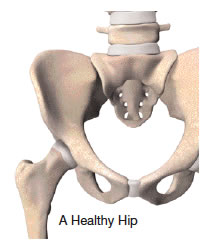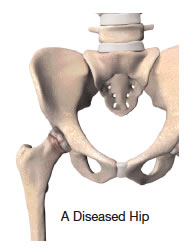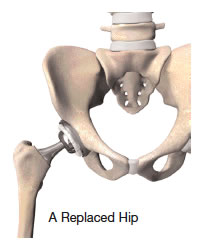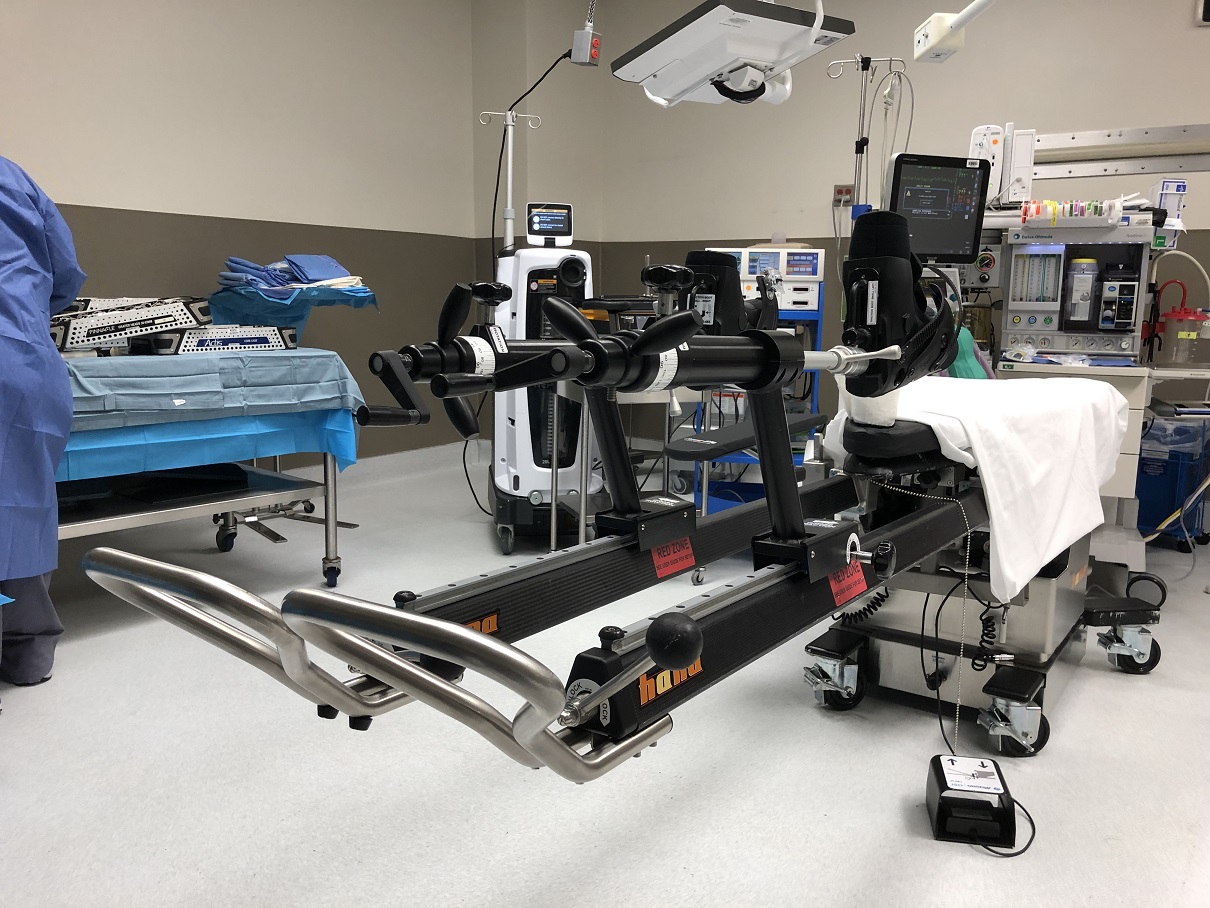Total Hip Joint Replacement
Your hip joint is a ball-and-socket joint, formed by the ball, or femoral head, at the upper end of the thighbone, and the rounded socket, or acetabulum, in the pelvis. The bone ends of a joint are covered with a smooth, tough material called cartilage. Normal cartilage cushions the bones and allows nearly frictionless and pain-free movement. The rest of the surfaces of the joint are covered by a thin, smooth tissue lining called the synovium. The synovium produces fluid that acts as a lubricant to reduce friction and wear in the joint.



Common causes of joint pain:
- Osteoarthritis (OA)
- Rheumatoid Arthritis
- Post-traumatic Arthritis
- Avascular Necrosis
- Paget’s Disease
In addition to the above, the failure or breakdown of previous replacement components may also result in the need for expert orthopaedic attention.
Symptoms and Evaluation
Total hip replacement is often reserved for patients who:
- Have a painful, disabling joint disease of the hip resulting from a severe form of arthritis
- Are not likely to achieve satisfactory results from less invasive procedures, such as arthrodesis (artificial stiffening or fixation of the joint)
- Have bone stock that is of poor quality or inadequate for other reconstructive techniques
In many instances, these symptoms will be progressive in nature, increasing in severity as damage persists over time.
When determining the type and extent of injury present, Dr. Ingram will complete an in-depth examination process. Efforts will include the recording of a medical and symptom history, as well as the completion of basic strength and flexibility tests. In some cases, an MRI or x-ray may be employed in order to detect the additional presence of cartilage fragments or bone spurs.
Treatment Options
Following the orthopaedic evaluation, your orthopaedic surgeon will review and discuss the results with you. Based on his or her diagnosis, your treatment options may include:
- Medication
- Joint fluid supplements
- Physical therapy
- Joint replacement
In a total hip replacement operation, the surgeon replaces the worn surfaces of the hip joint with an artificial hip joint. The worn head of the femur (thigh bone) is replaced with a metal or ceramic ball mounted on a stem; the stem is placed firmly into the canal of the thigh bone at its upper end. The acetabulum (hip socket) is prepared and implanted with a metal cup and plastic or ceramic insert. The ball and insert glide together to replicate the hip joint.
Post-Op Recovery
Generally, after hip replacement surgery, you may spend approximately 3 to 5 days in the hospital. Most hip replacement patients begin standing and walking with the help of a walker and a physical therapist the day after surgery.
Recovery varies with each person. It is essential that you follow your orthopaedic surgeon’s instructions regarding home care during the first few weeks after surgery; especially the exercise program you are prescribed. You should be able to resume many normal light activities of daily living within 3 to 6 weeks following surgery. Some discomfort with activity, and at night, is common for several weeks. Complete recovery can take from about 3 to 6 months.
While most people will gradually increase their activities and play golf, doubles tennis, shuffleboard or bowling, you will be advised to avoid more active sports, such as jogging, singles tennis and other high impact activities.
Total Hip Replacement in Bullhead City AZ
Dr. Ingram is an expert in total hip joint replacement, emphasizing use of the most minimally invasive approaches possible. To schedule an appointment, contact his Bullhead City AZ office at (928) 444-1330.
Find out more about Hip Replacement:
>>> Patient Education - Total Hip Joint Replacement







